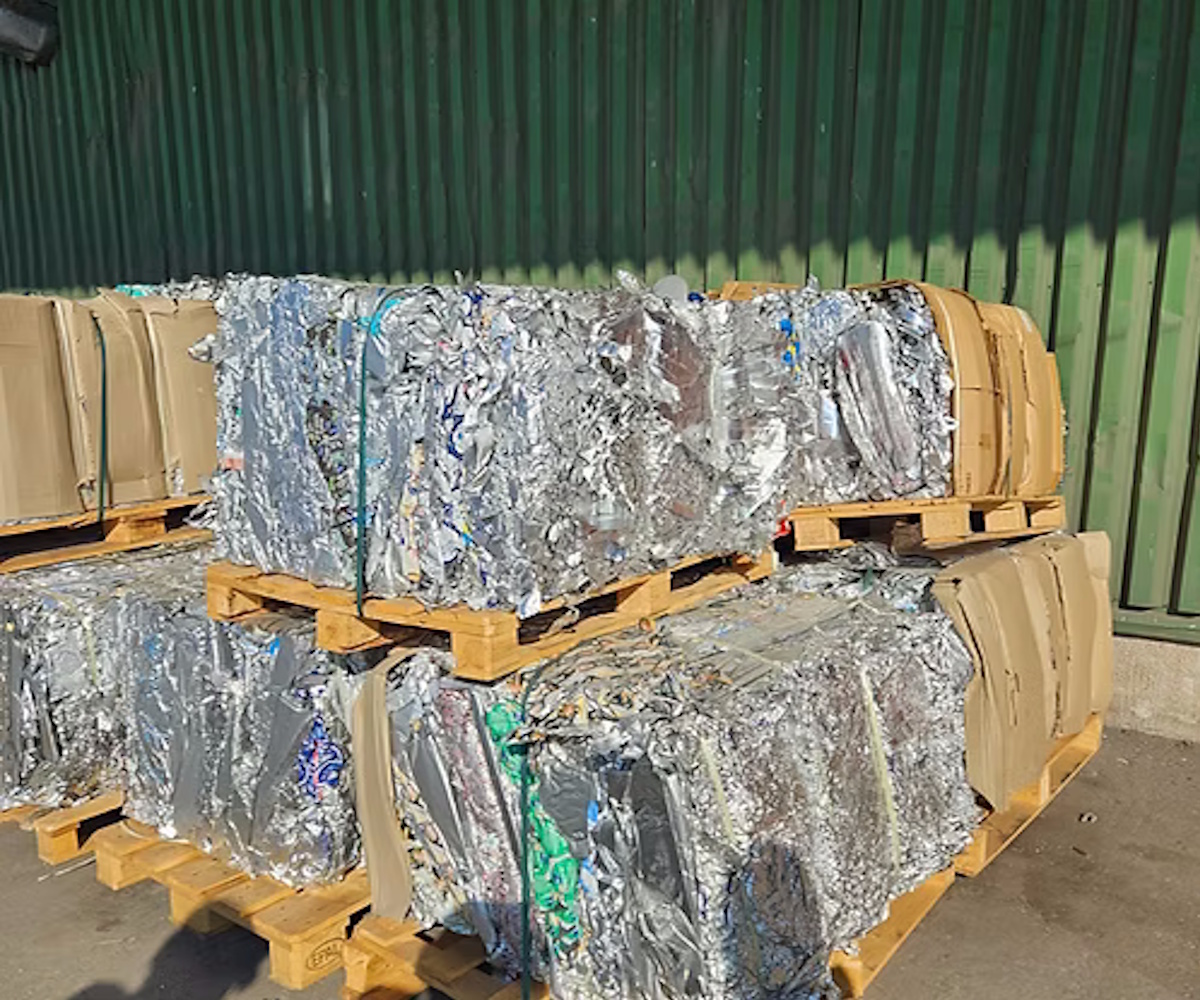The Growing Demand for Recycled Aluminium in the Circular Economy: A Sustainable Revolution
Admin
2025-04-14
Do you know that recycling just one tonne of aluminium saves up to 9 tonnes of CO₂ emissions compared to primary production? As industries and governments scramble to meet net-zero targets, recycled aluminium is no longer a niche player—it’s the backbone of a resource-efficient future.
This shift isn’t just about sustainability; it’s a fundamental reimagining of how materials flow through our economy. Welcome to the era where recycled aluminium takes centre stage in the circular economy.
Circular Economy 101: Why Recycled Aluminium Fits the Mould
The circular economy model prioritises keeping materials in use for as long as possible, minimising waste, and regenerating natural systems. Unlike the traditional “take-make-dispose” linear model, circularity focuses on closed-loop systems where products are designed for longevity, reuse, and recycling. Aluminium, with its infinite recyclability, is a poster child for this philosophy.
Recycled aluminium (often called “secondary aluminium”) saves 95% of the energy required to produce primary aluminium from bauxite. This energy efficiency, combined with its ability to be reprocessed endlessly without quality loss, makes it indispensable for industries aiming to slash carbon footprints. The International Aluminium Institute (IAI) estimates that recycled aluminium currently meets 36% of global demand, a figure projected to rise sharply as circular strategies gain traction.
Driving Forces Behind the Recycled Aluminium Boom
1. Regulatory Pressure and Climate Goals
Governments are tightening regulations to accelerate decarbonisation. The European Union’s Circular Economy Action Plan, for instance, mandates that 50% of aluminium in packaging be recycled by 2025, rising to 75% by 2030. Similarly, the U.S. Inflation Reduction Act incentivises low-carbon materials, favouring recycled content in manufacturing.
2. Corporate Sustainability Commitments
Major brands like Apple, BMW, and Ball Corporation are pivoting to recycled aluminium to meet ESG goals. Apple’s 2023 Environmental Report revealed that all iPhone enclosures now use 100% recycled aluminium, cutting lifecycle emissions by 75%. Automotive giants like Audi are integrating secondary aluminium into electric vehicle (EV) components, capitalising on its lightweight properties to extend battery range.
3. Economic Resilience
Volatile energy prices and geopolitical tensions have exposed vulnerabilities in primary aluminium supply chains. Recycled aluminium, which relies on scrap rather than imported bauxite or alumina, offers stability. According to CRU Group, secondary aluminium production costs are 40-60% lower than primary, making it a cost-effective alternative even as demand surges.
4. Consumer Demand and Technological Innovation
Consumers are increasingly voting with their wallets. A 2023 McKinsey survey found that 66% of global respondents consider sustainability a key factor in purchasing decisions. Brands like Ball Corporation, the world’s largest beverage can producer, have responded by sourcing 85% recycled content for their cans.
Technological advancements are also breaking barriers. Startups like Greenbatch use AI-powered spectroscopy to sort aluminium scrap by alloy type, achieving 99% purity rates. Meanwhile, blockchain platforms like Circulor enable real-time tracking of recycled content, assuring compliance with ESG standards.
Circular Economy in Action: Pioneering Projects
The rise of recycled aluminium isn’t theoretical—it’s backed by groundbreaking initiatives:
- Novelis’ Closed-Loop Systems: Novelis, a global leader in aluminium rolling, operates one of the world’s largest recycling facilities in Nachterstedt, Germany. The plant processes 400,000 tonnes of scrap annually, supplying automakers like Jaguar Land Rover with high-recycled-content sheets. Their partnership with Coca-Cola has also diverted over 70 billion used beverage cans back into production.
- Hydro’s Circular Extrusion Project: Norwegian firm Hydro has launched a pilot plant in Spain to recycle post-consumer aluminium scrap into high-quality extrusions for construction and transport. The project aims to achieve 90% scrap utilisation rates by 2025.
- Japan’s Urban Mine Initiative: Japan, which imports 90% of its metal needs, is tapping into its “urban mine” of discarded electronics. The government-funded project recovers aluminium from e-waste, with companies like Mitsubishi Materials achieving 98% recovery rates for smartphone casings.
Challenges and Innovations
While demand grows, hurdles remain. Contamination from mixed scrap and inconsistent collection infrastructure can compromise quality. However, advancements in sorting technologies—like AI-driven spectroscopy and blockchain traceability—are addressing these issues. For example, Australian startup Greenbatch uses AI to identify and separate aluminium alloys in e-waste, achieving 99% purity rates.
Additionally, certifications like the Aluminium Stewardship Initiative (ASI) ensure responsible sourcing. ASI’s Performance Standard now covers 25% of global aluminium production, with recycled-content targets embedded in the criteria.
The Future is Circular—and Aluminium is Leading the Charge .
The recycled aluminium revolution is more than a trend; it’s a systemic shift reshaping industries from packaging to aerospace. As circular economy principles become mainstream, secondary aluminium is poised to dominate supply chains, driven by its unmatched sustainability credentials and economic viability.
Yet, scaling this transition requires collaboration. Governments must invest in recycling infrastructure, corporations need to prioritise design-for-recycling, and consumers play a role by participating in recycling programs. With initiatives like the EU’s Carbon Border Adjustment Mechanism penalising carbon-intensive imports, the business case for recycled aluminium has never been stronger.
So, the next time you sip from a soda can or drive an EV, remember that aluminium could have had multiple past lives—and thanks to the circular economy, it’s destined for many more. The question isn’t whether recycled aluminium will dominate; it’s how quickly industries can adapt to harness its full potential.
Reference
- International Aluminium Institute: https://international-aluminium.org/
- Circular Economy Action Plan: https://environment.ec.europa.eu/strategy/circular-economy-action-plan_en
- Apple’s 2023 Environmental Report: https://www.apple.com/in/environment/
- CRU Group: https://international-aluminium.org/wp-content/uploads/2022/03/CRU-Opportunities-for-aluminium-in-a-post-Covid-economy-Report.pdf
- 2023 McKinsey survey: https://www.mckinsey.com/industries/packaging-and-paper/our-insights/sustainability-in-packaging-2023-inside-the-minds-of-global-consumers
- Novelis: https://www.novelis.com/sustainability/recycling
- Hydro: https://www.hydro.com/en/products/aluminium-extrusions/
- Government-funded project: https://japannews.yomiuri.co.jp/politics/politics-government/20241228-230260/
- Carbon Border Adjustment Mechanism: https://www.european-aluminium.eu/
Categories
Raw Materials
Scrap
Consumables
Primary Aluminium
Secondary Aluminium
Equipment
Technology
Downstream Products
Finished Products
Utilities
Services
Others
Recent Blogs
Subscribe to newsletter
Connect with us












